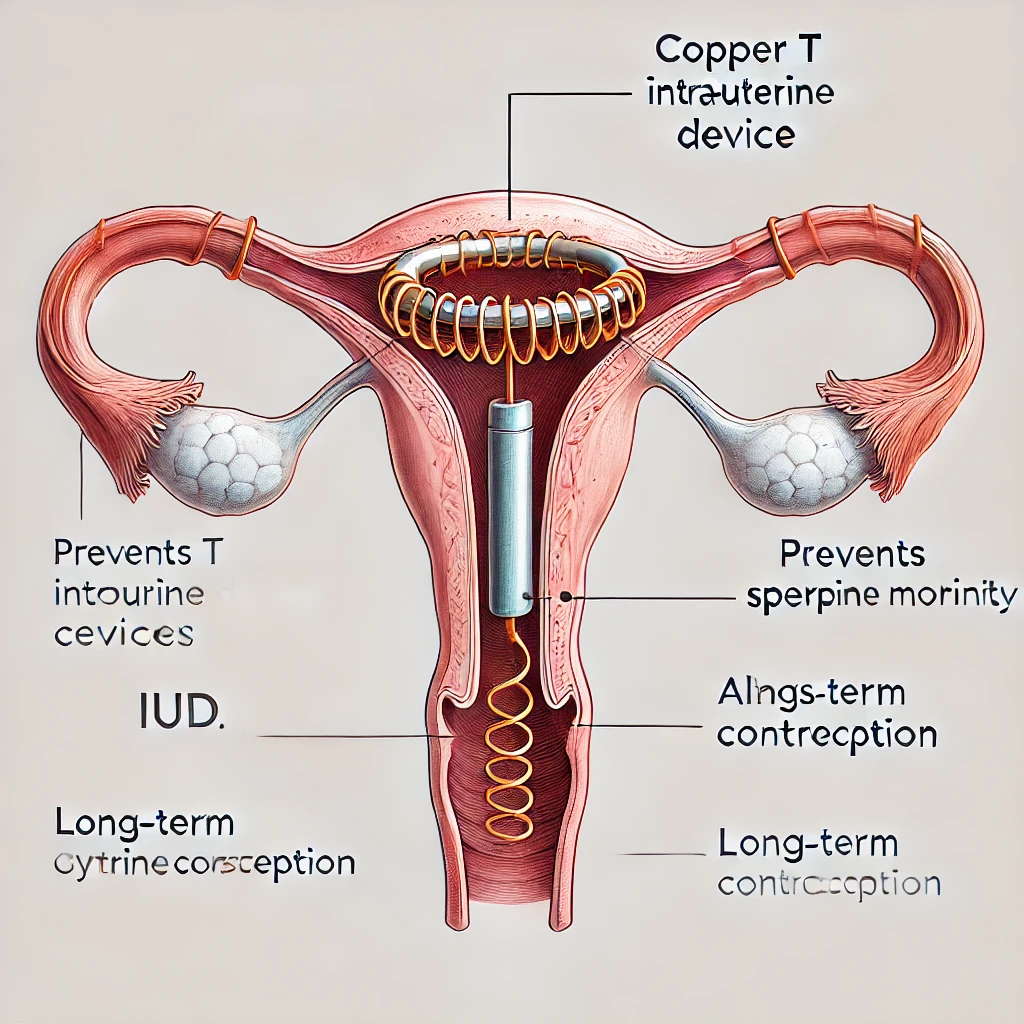Copper T, also known as the Copper Intrauterine Device (IUD), is a popular and effective method of birth control. It is a small, T-shaped device made of plastic and wrapped with copper, which is inserted into the uterus to prevent pregnancy. Copper T is a non-hormonal contraceptive, making it a preferred choice for women who wish to avoid hormonal methods of birth control.
How Does Copper T Work?
The Copper T works primarily by releasing copper ions into the uterus, which creates a hostile environment for sperm. Here’s how it prevents pregnancy:
- Sperm Immobilization – The copper ions released by the device interfere with sperm mobility, making it difficult for sperm to reach and fertilize an egg.
- Prevention of Implantation – Even if fertilization occurs, the presence of the IUD alters the uterine lining, preventing the implantation of a fertilized egg.
- Long-Lasting Protection – Depending on the type, Copper T can remain effective for 5 to 10 years, providing long-term contraception without daily maintenance.
Advantages of Copper T
- Highly Effective – It is more than 99% effective in preventing pregnancy.
- Hormone-Free – Unlike birth control pills or hormonal IUDs, Copper T does not release hormones, making it a good choice for those sensitive to hormonal changes.
- Long-Term Contraception – Once inserted, it offers protection for several years without requiring daily attention.
- Emergency Contraception – If inserted within five days of unprotected intercourse, Copper T can act as emergency contraception.
- Easily Reversible – Fertility usually returns quickly once the device is removed.
Side Effects and Risks of Copper T
While Copper T is a safe and reliable contraceptive, it does come with some potential side effects:
- Heavier and Longer Periods – Some women may experience heavier bleeding and longer menstrual cycles, especially in the first few months after insertion.
- Cramps and Discomfort – Mild to moderate cramping may occur initially but often subsides over time.
- Spotting Between Periods – Some women may notice irregular spotting in the first few months.
- Risk of Infection – Although rare, there is a small risk of infection, especially within the first 20 days of insertion.
- Expulsion or Displacement – In some cases, the device may move from its original position or be expelled, requiring reinsertion or replacement.
- Allergic Reaction – Though uncommon, some women may have a sensitivity to copper, leading to irritation or discomfort.
Who Should Avoid Copper T?
Copper T may not be suitable for everyone. Women with the following conditions should consult their doctor before opting for this contraceptive method:
- Heavy or painful periods
- Uterine abnormalities or fibroids
- Copper allergy or Wilson’s disease (a condition affecting copper metabolism)
- Active pelvic infection or history of recurrent pelvic inflammatory disease (PID)
Conclusion
Copper T is an effective and long-lasting birth control option for women looking for a non-hormonal method of contraception. While it has some side effects, many women find its benefits outweigh the drawbacks. If you are considering Copper T, consult a healthcare provider to determine if it is the right choice for you.

